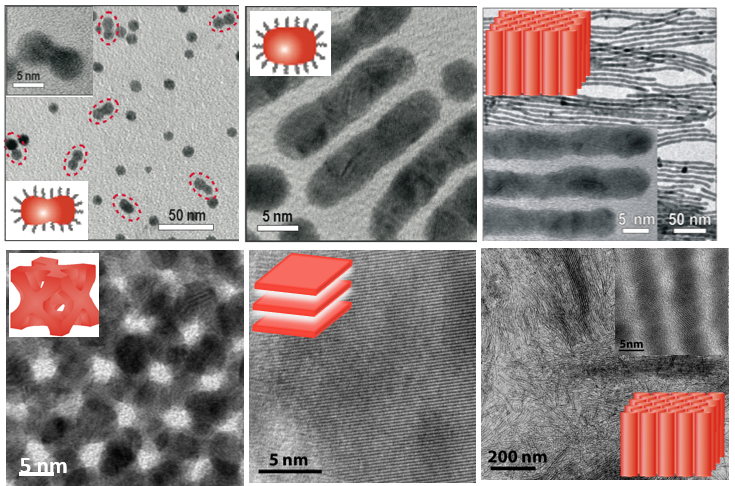Stress-Induced Fabrication of Nanomaterials
A simple, efficient approach for tuning and fabricating novel nanomaterial architectures with breakthrough properties using mechanical pressure
Nanomaterials possess shape and size-dependent properties for diverse applications such as sensing, optics, and catalysis. Currently, nanomaterials are synthesized using chemical methods that require specialized processing conditions, expensive reactors and requirements, added purification steps, and highly trained operators. Simplified nanoparticle synthesis presents opportunities to reduce production cost, improve quality and structure, and minimize the environmental and safety concerns related to current state of the art.
Sandia researchers have developed a simple, efficient approach to tune and fabricate novel nanomaterial architectures with breakthrough chemical and physical properties using mechanical pressure. The application of external pressure eliminates the need for specific chemical and physical interaction and provides a streamlined process. Pressure can be applied using a diamond anvil cell, piston-cylinder device, multi-anvil cell, or embossing machine. Gradual elevation of pressure can be applied below a threshold (8 GPa) to reversibly tune the interparticle spacing of ordered assemblies of metallic nanoparticles. When the applied stress exceeds the threshold pressure, the nanoparticle assemblies begin to contact, coalesce, and finally weld to form new nanostructures, such as nanorods, nanowires, and nanosheets.
- Produces finer and cleaner results
- Compatible with II-VI or IV-VI semiconductor materials
- Can be used to refine metals and semiconductor materials
- Eliminates environmentally harmful processes and residues
- Photocatalysts and phototherapy solutions
- Semiconductor fabrication
- Optical devices
- Nanomaterial fabrication
- Nanosensors

- Sandia R&D100 Award Winner for 2016
- Better living through pressure Sandia Lab News (April 2021)
| Patent Title | Patent Number | Grant Date |
|---|---|---|
| Tuning and synthesis of semiconductor nanostructures by mechanical compression | 9,187,646 | 11/17/2015 |
| Tuning and synthesis of metallic nanostructures by mechanical compression | 9,180,420 | 11/10/2015 |
| Method for making nanomaterials | 8,455,048 | 06/04/2013 |
SD# 11478, 12473
Published2/25/2021
Last Updated2/25/2021